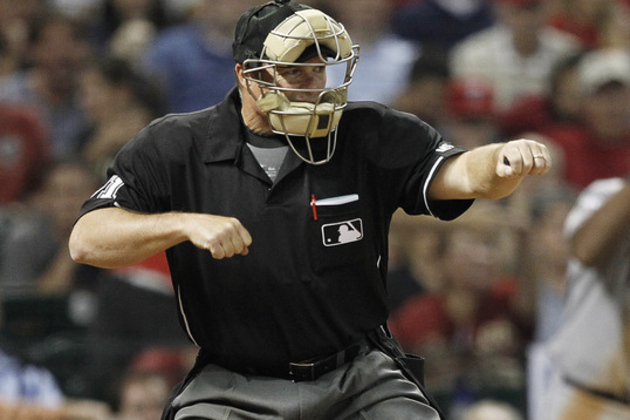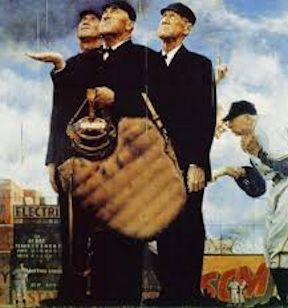 Umpire Mechanics
Umpire Mechanics
 There is a more or less standard set of field mechanics that derives, ultimately, from the professional umpire schools. We're tempted to think that umpires in professional baseball work in four-man crews. From the professional ranks, field mechanics filter down through the levels – NCAA, NFHS (high school), travel ball, Little League, and ultimately they reach almost all of the well run amateur leagues and their respective umpire organizations. You'll find a few variations here and there, but for the most part all well trained umpire crews are pretty much on the same page.
There is a more or less standard set of field mechanics that derives, ultimately, from the professional umpire schools. We're tempted to think that umpires in professional baseball work in four-man crews. From the professional ranks, field mechanics filter down through the levels – NCAA, NFHS (high school), travel ball, Little League, and ultimately they reach almost all of the well run amateur leagues and their respective umpire organizations. You'll find a few variations here and there, but for the most part all well trained umpire crews are pretty much on the same page.
If you have ever worked with a new partner who is not trained in the standard mechanics, or even worse, says something like "I prefer to do it my way," – well, if you've ever worked with a partner like this (and who among us hasn't), then you completely understand the importance of working together as a team.
Let's agree on one thing: an umpire crew – any umpire crew – performs better, makes fewer errors, and is more professional, if the entire crew is on the same page. Everybody is in position, the field is covered, and calls don't get missed. Most importantly (and this is really important), everyone knows what everyone else is going to do under any set of circumstances.
Articles on Umpire Mechanics

